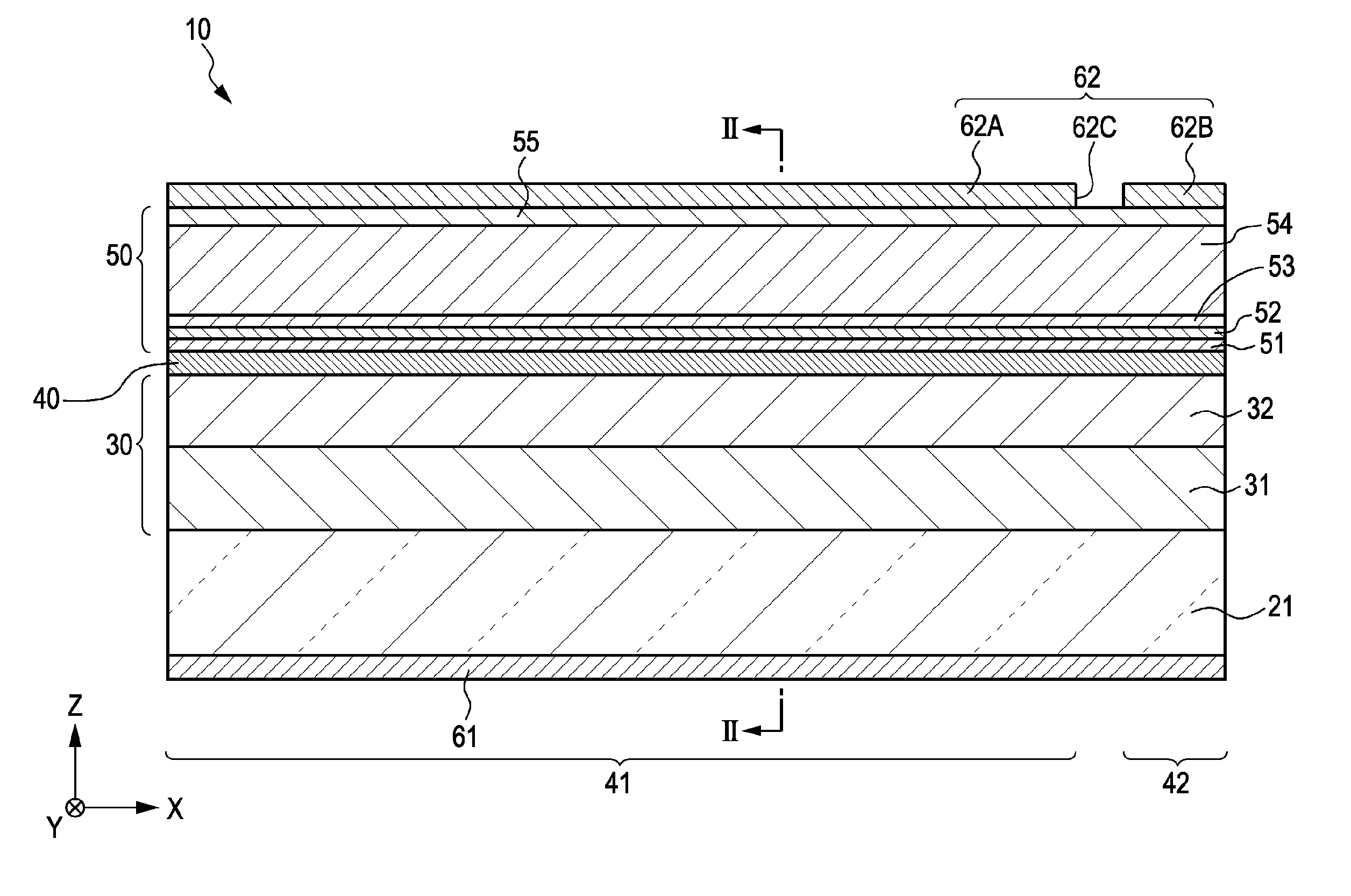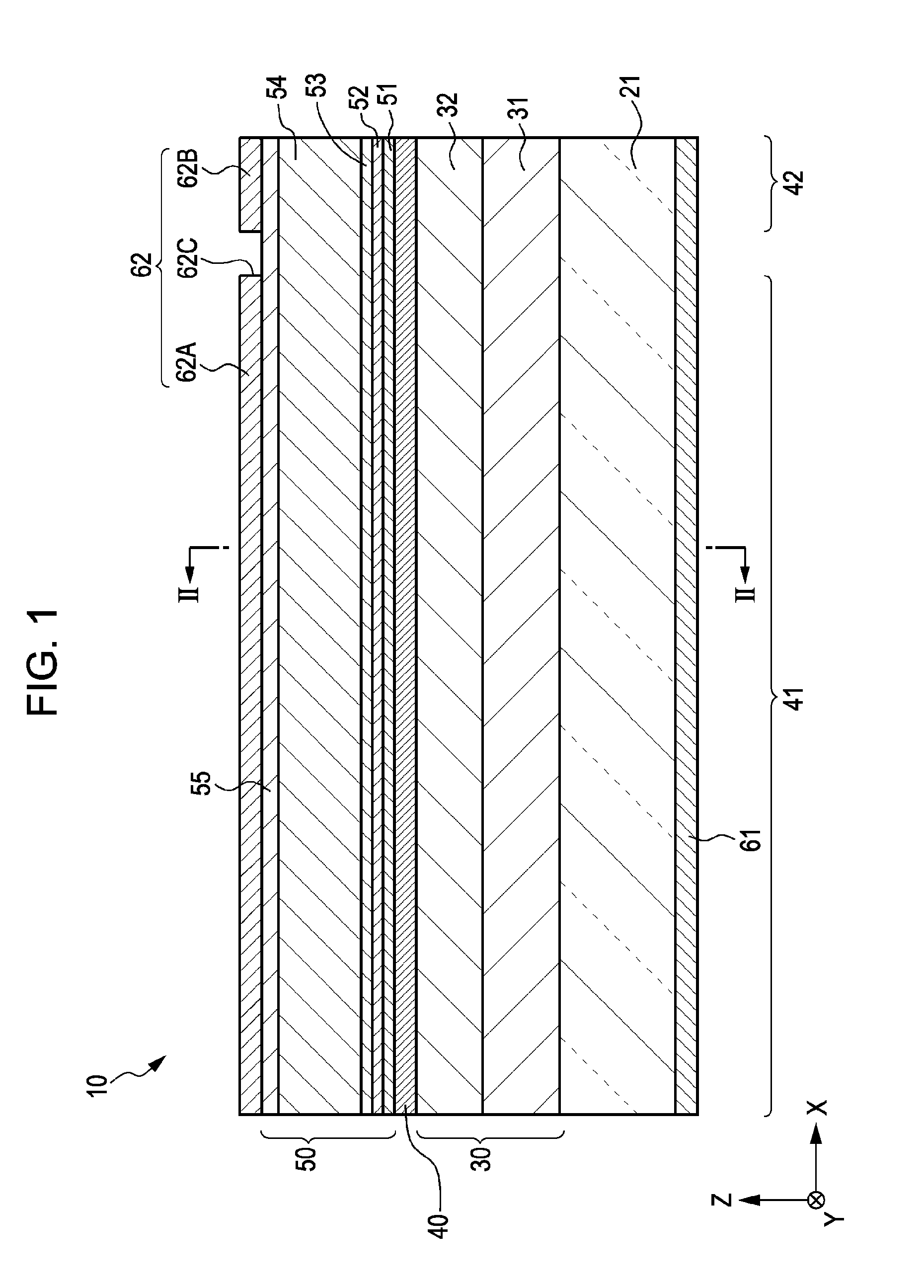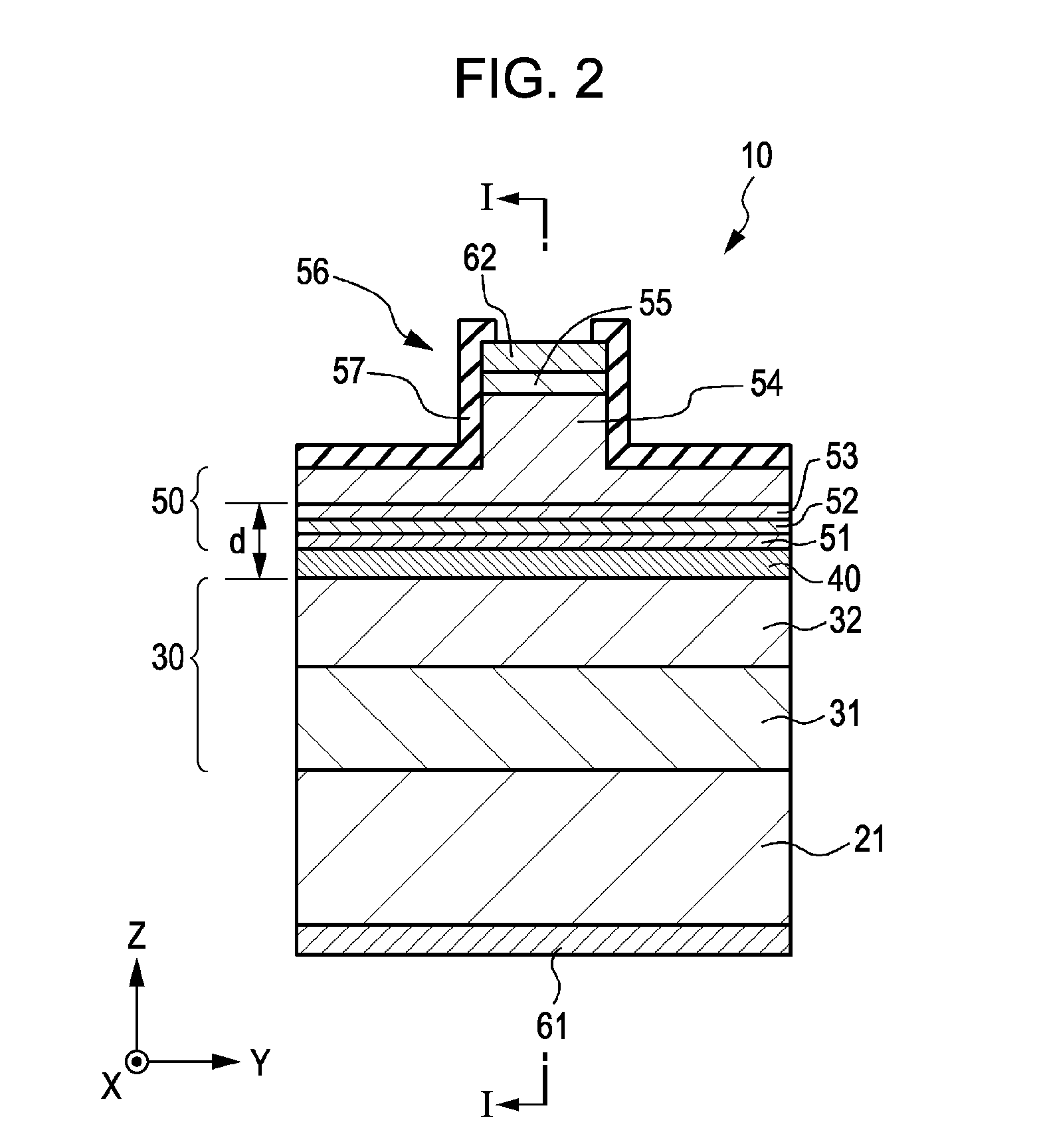Bi-section semiconductor laser device, method for manufacturing the same, and method for driving the same
a laser device and semiconductor technology, applied in the direction of lasers, semiconductor laser structure details, semiconductor lasers, etc., can solve the problems of easy misalignment between the second electrode increased operating voltage of laser devices, etc., to suppress the degradation of optical and electrical characteristics of the second compound semiconductor layer, high peak power, and high electrical resistance
- Summary
- Abstract
- Description
- Claims
- Application Information
AI Technical Summary
Benefits of technology
Problems solved by technology
Method used
Image
Examples
example 2 (modification of example 1)
3. Example 2 (Modification of Example 1) and Others
[0057]Method for Manufacturing Bi-section Semiconductor Laser Device According to Embodiment of the Present Invention, Bi-section Semiconductor Laser Devices According to First and Second Embodiments of the Present Invention and Method for Driving the Devices, and General Description
[0058]In the method for manufacturing a bi-section semiconductor laser device according to an embodiment of the present invention, in the step (D), assuming that the etching rate of the second electrode is ER0 and the etching rate of the stacked structure is ER1 when the separating groove is formed in the second electrode, ER0 / ER124 1×10 is satisfied and ER0 / ER1≧1×102 is preferably satisfied. When ER0 and ER1 satisfy such a relationship, the second electrode can be etched with certainty while the stacked structure is not etched (or is slightly etched).
[0059]In this case, the second electrode is preferably composed of a palladium (Pd) single layer, a nick...
example 1
[0072]Example 1 relates to a method for manufacturing a bi-section semiconductor laser device according to an embodiment of the present invention, bi-section semiconductor laser devices according to first and second embodiments of the present invention, or a method for driving the same. FIG. 1 is a schematic end view (a schematic end view taken along an XZ plane) of a bi-section semiconductor laser device of Example 1 in a direction in which a cavity extends. FIG. 2 is a schematic sectional view (a schematic sectional view taken along a YZ plane) in a direction perpendicular to the direction in which the cavity extends. FIG. 1 is a schematic end view taken along line I-I of FIG. 2. FIG. 2 is a schematic sectional view taken along line II-II of FIG. 1.
[0073]A bi-section semiconductor laser device 10 of Example 1 having an emission wavelength of 405 nm includes:
[0074](a) a stacked structure obtained by stacking, in sequence, a first compound semiconductor layer 30 of a first conductiv...
example 2
[0102]Example 2 is a modification of Example 1. In Example 1, the bi-section semiconductor laser device 10 is disposed on the (0001) surface of an n-type GaN substrate 21, that is, on the C surface. The (0001) surface is a crystal face having a polarity. However, when such a substrate is used, the active layer 40 is subjected to a quantum confined Stark effect (QCSE) due to an internal electric field caused by piezoelectric polarization and spontaneous polarization, whereby it sometimes becomes difficult to electrically control saturable absorption. It was found that, in some cases, a direct current supplied to the first electrode and a reverse bias voltage applied to the saturable absorption region have to be increased in order to achieve self-pulsation and mode locking operations; a subpulse component accompanying a main pulse is generated; or it becomes difficult to achieve synchronization between external signals and optical pulses.
[0103]As a result, it was found that, to preven...
PUM
 Login to View More
Login to View More Abstract
Description
Claims
Application Information
 Login to View More
Login to View More - R&D
- Intellectual Property
- Life Sciences
- Materials
- Tech Scout
- Unparalleled Data Quality
- Higher Quality Content
- 60% Fewer Hallucinations
Browse by: Latest US Patents, China's latest patents, Technical Efficacy Thesaurus, Application Domain, Technology Topic, Popular Technical Reports.
© 2025 PatSnap. All rights reserved.Legal|Privacy policy|Modern Slavery Act Transparency Statement|Sitemap|About US| Contact US: help@patsnap.com



